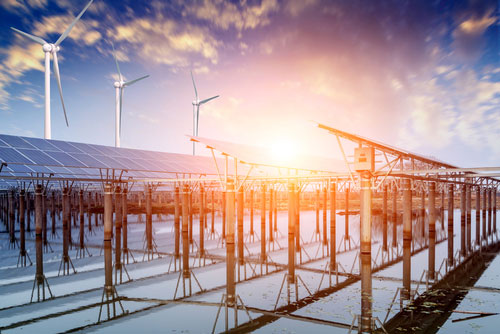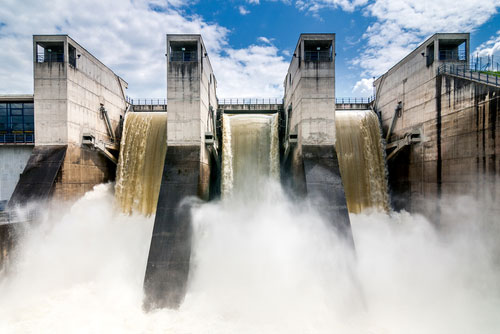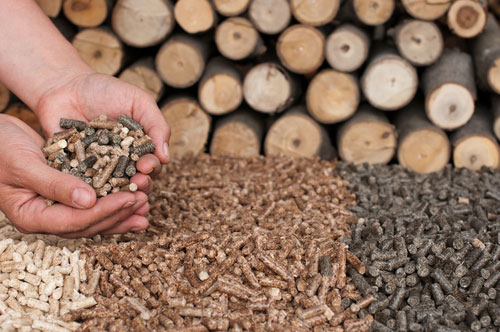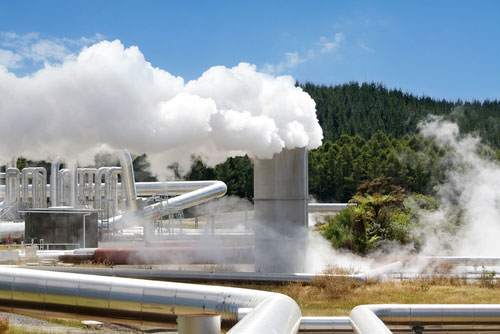PLease give me some examples of couple Verb sentances
Hãy nhập câu hỏi của bạn vào đây, nếu là tài khoản VIP, bạn sẽ được ưu tiên trả lời.



1 are taught
2 is said to have been built
3 Is - runnung
4 meet - go
5 tells
6 Will - begin

phease, give me some more
đúng không bạn nếu đúng k mình nha
chúc bạn học tốt

Renewable energies (or renewables) are ways to generate energy from (theoreally) unlimited natural resources. These resources are either available with no time limit or replenish more quickly than the rate at which they are consumed.
Renewable energies are generally spoken of as opposed to fossil fuel energies. The fossil fuels’ stocks are limited and non-renewable in the human timescale. The most known examples of these resources are coal, oil or natural gas. On the contrary, renewable energies are produced from renewable sources. Here, we’re talking about energy coming from solar rays, wind or water cycles – all theoreally unlimited on a human scale time.
Renewable energies are also often referred to as “green energies” or “clean energies”. Still, this doesn’t mean that these energies aren’t harmful to the environment and have zero impact. Nonetheless, they have a low environmental impact compared to fossil fuels. That’s why they’re increasingly becoming important elements in companies’ CSR strategies in terms of sustainable development.
There are several types of renewable energies that are produced by different sources such as the sun, wind or water. In fact, these renewables’ power consumption has been growing over the last year. They have provided 8% of the world’s electricity in 2017 and they now cover 1/3 of the power mix in Europe. At the same time, the energy grid gets 1/4 of the total energy in China and 1/6 in the United States, India, and Japan. Let’s learn more about them below.
- Related content:
- Is Solar Energy Really Green And Sustainable?
1 – Solar Energy

This type of renewable energy comes directly from the capture of solar radiation. Here, the solar radiation is absorbed by specific sensors and rebroadcasted following 2 possible operation modes:
- Capturing sun rays and directly converting them into energy through photovoltaic solar panels;
- Capturing, collecting and turning the sunlight into heat that warms up water or air.
Examples of Solar Energy in the World
It’s estimated that in 2017 1,6% of the worldwide generated energy came from solar sources. At the same time, solar power also contributed to 20% of the total energy growth in this same year. Some of the most known sources of solar energy are:
- The Kurnool Ultra Solar Park in India. It has a total generation capacity of 1000MW and over 4 million solar panels installed;
- The Longyangxia Solar Park in China that has a total capacity of 850MW and covers around 25sq km.
- The Kamuthi Solar Facility in India: it has a total capacity of 648MV and covers 10sq km.
Is Solar Energy Renewable or Nonrenewable?
Solar energy is inexhaustible in the sense that it will cease once the solar system’s star – the sun – dies. However, many people wonder if, from a perspective of human’s being able to capture and use solar energy in the long-term, whether solar energy is renewable or nonrenewable.
[Full answer available soon.]
2 – Windpower, a Renewable Energy
Wind power is another renewable energy. Here, the wind’s kine energy makes turbines spin and creates a mechanical movement. Afterward, a generator transforms this mechanical energy into electricity. There are several types of wind renewable energies: onshore wind turbines, off-shore wind turbines and even floating wind turbines. But the operating principles are basically the same for all these types of wind-generated energy.
Examples of Wind Power in the World
Wind power continues has also been growing, In fact, it provided 4.4% of global power generation in 2017. The highest installed wind capacity belongs to China (164GW). At the same time, in the EU, wind power provides 15% or more of the energy generated in several countries such as Germany, Portugal or Lithuania. Some of the most known sources of wind power energy are:
- The Gansu Wind Farm in China. It is still under construction and it will be able to produce 20,000MV of power by 2020;
- The onshore Muppandal Wind Farm in India with a capacity of 1,500MW and over 3000 turbines;
- The Alta Wind Energy Center in the U.S. with a total capacity of 1,548MW that’s expected to reach 3,000MW by 2040;
- The Walney Extension in the UK. It has a total capacity of 659MW and it’s the world’s largest offshore farm.
3 – Hydro-Electric Power

Hydro-electric power consists in the transformation of the kine energy of the water (from rivers, dams, marine currents or tides) into mechanical energy by turbines.
- Related content:
- Marine energies: what is it?
- 5 promising marine energy projects
- The tidal energy: an example of the tidal turbine DCNS
Examples of hydro-electric power in the world
- The Sihwa Lake Tidal Power Station in South Korea. This is the world’s biggest tidal power installation and it has a capacity of 254 MW;
- The Rance Tidal Power Station in Brittany, France, has a 240 MW capacity;
- The Three Gorges Dam in China is the world’s largest power station in terms of installed capacity (22,500 MW).
4- Biomass

Biomass is made up of organic materials from plants or animals that contain stored energy. The combustion of these natural materials produces renewable energy. Some examples of generating energy from biomass are:
- Directly burning solid biomass garbage or wood to produce heat;
- Converting biomass into biogases such as methane or CO2 due to the bacterial activity that happens in the absence of oxygen (as is the case in landfills);
- Using sugar or corn crops to create biofuels such as bioethanol or biodiesel and mixing them with fossil fuels afterward. As a matter of fact, the world’s biofuels production increased by 3.5% in 2017.
Related content:
- Palm oil has a huge environmental impact. What’s the impact of its use as a biofuel?
- What Is Biogas Energy Production?
Examples of Biomass Energy in the World
Some of the most known biomass power plants in the world are:
- The Iron Bridge power station in the UK, with a capacity of 740MW. It uses wood pellets as the main fuel;
- The Alholmenskaft power station in Finland. It has a 260MW energy generation capacity;
- The Polaniec power plant in Poland that uses mainly agricultural by-products and wood residues. It has a 205MW capacity.
5- Geothermal Power as a Renewable Energy

The Earth generates and stores geothermal energy. In other words, radioactive materials decaying inside the Earth are emitting energy. Electricity can be created using directly or indirectly this energy, depending on the technology implemented. There are 3 main ways to use geothermal energy:
- Generating electricity directly from the Earth’s heat;
- Producing heat directly from hot water boiling on the planet’s surface;
- Using pumps over the shallow ground to heat (and also to cool)

- Firstly, if you live in an extended family, you’d have to be a patient person because you’d be living with lots of others and if you weren’t patient, it could lead to problems. You’d have to wait your turn for everything – the bathroom, the food…
- Sencond, you need to ready to share. Because, if you live in a city, you must pay rent, gas and electricity bills as well as for credit cards… etc. It is really hard to pay them alone, but if you live with your extended family it means, you can share all the expenses.
- Finally you’d have to be help people with all your heart. If you live in an extended family, it means there are always some people who are willing to help you whenever you need. It is very beneficial, if you are in a bad situation.
STUDY WELL!

1 Mr. Brown told Ann to give him some food
2 The old lady told me not to be noisy

Được tôn vinh là ánh sáng mở đường cho một cuộc cách mạng năng lượng, nhưng giới khoa học mới đây đã chỉ ra chính những chiếc đèn LED lại đang đẩy mạnh tình trạng ô nhiễm ánh sáng toàn cầu, kéo theo những hậu quả nghiêm trọng đối với sức khỏe con người và động vật.
Nghiên cứu đăng tải trên tạp chí Science Advances ngày 22/11 phân tích dữ liệu vệ tinh cho thấy những buổi tối trên Trái Đất đang có xu hướng trở nên sáng hơn, với diện tích sử dụng ánh sáng nhân tạo ngoài trời tăng với tốc độ 2,2%/năm trong giai đoạn 2012-2016.
Các chuyên gia nhấn mạnh đây là một vấn đề nghiêm trọng vì ánh sáng vào ban đêm đã được xác định là làm rối loạn đồng hồ sinh học ở người và tăng nguy cơ các bệnh ung thư, tiểu đường cũng như chứng trầm cảm. Ánh sáng vào ban đêm thậm chí có thể giết chết nhiều động vật như đèn thu hút côn trùng hay làm nhiễu loạn khả năng định hướng của chim hay rùa biển.
Chris Kyba, nhà vật lý của Trung tâm Nghiên cứu Địa chất Đức và cũng là chủ nhiệm công trình nghiên cứu, cho rằng vấn đề không nằm ở công nghệ đèn LED, vốn được ưa chuộng nhờ đặc tính tiết kiệm điện.
Phát biểu họp báo về công trình nghiên cứu mới, ông Kyba cho rằng vấn đề là việc con người có xu hướng lạm dụng khi dùng quá nhiều đèn với suy nghĩ họ đang sử dụng công nghệ tiết kiệm. Các nhà khoa học gọi đây là "hiệu ứng đảo ngược."
Theo một nghiên cứu năm 2010 công bố trên tạp chí Ecological Economics, những buổi tối quá sáng không chỉ ảnh hưởng tới môi trường tự nhiên mà còn gây thiệt hại gần 7 tỷ USD hàng năm do "tác động tiêu cực đối với đời sống hoang dã, sức khỏe, ngành thiên văn và lãng phí năng lượng."
Travis Longcore, chuyên gia của Đại học Nam California, cho rằng kết luận của nghiên cứu mới "không có gì bất ngờ" đối với những người đã bỏ nhiều năm theo đuổi vấn đề này. Chuyên gia này cho rằng con số 2,2% mà nghiên cứu đưa ra là "không bền vững."
Các giải pháp được đề xuất bao gồm sử dụng các nguồn sáng cường độ thấp, tắt đèn khi không sử dụng, dùng đèn LED ánh sáng ấm thay vì ánh sáng xanh hay tím để hạn chế tác hại đối với sức khỏe con người và động vật, và quan trọng nhất là thay đổi cách suy nghĩ của người dân về việc quá dựa dẫm vào nguồn sáng nhân tạo vào ban đêm.
She walks to school every day.
He looks very tired.
My mother goes to work by motorbike every day.
thanks, bro